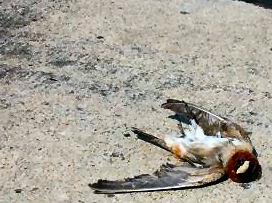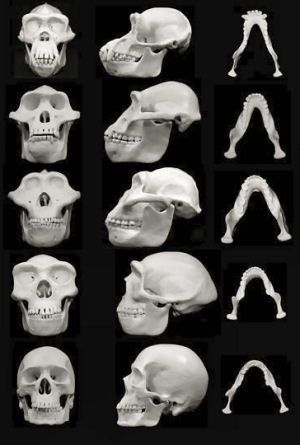
Urban environments can be evolutionary hotspots, suggests a study in the journal Current Biology that explored why road kill surveys show a sharp decline in bird mortality over the last 30 years.
Charles R. Brown, of the University of Tulsa, has been studying cliff swallows in Nebraska since 1982. These birds build clusters of mud nests attached to vertical walls under bridges, overpasses, or railroad tracks, often in colonies of thousands. Every year, for the last 30 years, Brown and co-researcher Mary Bomberger Brown have traveled these areas to collect dead birds and compare them to birds that died accidentally in other ways.
The Browns’ road kill surveys reveal a sharp decline in mortality over the last 30 years, a drop that can’t be explained by declines in the bird population or in traffic volume. The birds that continue to die on the roads are those with longer-than-average wingspans.
Brown believes the shorter wingspans of the surviving birds may help them take off more quickly and pivot away from passing cars. “Longer-winged swallows sitting on a road probably can’t take off as quickly, or gain altitude as quickly, as shorter-winged birds, and thus the former are more likely to collide with an oncoming vehicle,” he explains.
It’s possible that other factors may be at play. For instance, swallows do learn from each other. But Brown says that regardless of the underlying causes, the findings show that traffic-related mortality can lessen over time even when traffic does not. “Evolution is an ongoing process, and all this – roads, SUVs, and all – is [now] part of nature; they exert selection pressures in a way we don’t usually think about,” he notes.
The researchers speculate that this may be good news for other species – including turtles and snakes – which are also known to suffer significant mortality on the nation’s roadways.
Related:
Discuss this article in our forum
Shifting Evolution Up A Gear
Honey, We Shrunk The Cod
Lasting evolutionary change “slow and rare”
Size matters: evolutionary changes in body size measured


















Comments are closed.